The Basics of Nutrition: Breaking Down the Terminology
Posted in

If you’ve ever found yourself studying the label on the back of a food product, unable to decipher what the different terms and values mean, you are not alone. The “Nutrition Facts” for most products can be confusing. We broke down the most commonly used labels and give you a play-by-play of each definition so that you can better understand what you’re eating and what the ingredients are doing to your body.
Serving Size

Perhaps one of the most overlooked yet important things on a nutrition label is the recommended serving size of the product. The nutrition facts displayed beneath this area are all a representation of one serving size, so if you are eating or drinking more than the recommended amount, be sure to calculate for the additional calories and other nutritional effects.
Calories
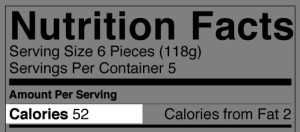
While most people have heard about “counting calories” and “keeping your calories under control,” in general, the actual definition of a calorie is not totally clear. According to Webster, a calorie is “a unit equivalent to the large calorie expressing heat-producing or energy-producing value in food when oxidized in the body.” Clear as mud, right? But in essence, calories are the energy that fuels our bodies. The amount of calories an adult needs varies by body type, activity level, and your resting metabolic rate (RMR). For more information check out what INTEGRIS dietitian Karen Massey has to say about it. However, in general, the minimum amount of calories needed by adults to fuel key organs is 1,000 to 1,400.
Calories from Fat
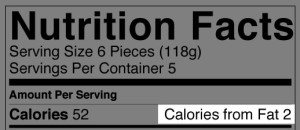
The calories from fat, located next to the calories on a nutrition label, represent the proportion of calories in that serving that come from fat. For example, if you have a label that reads “Calories: 250, Calories from Fat: 110” then 110 of the 250 calories in a single serving come from fat.
Total Fat
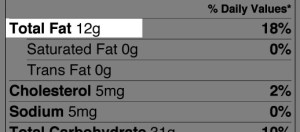
The total fat label represents the total amount of fat in the serving, including the saturated fat and trans fat. While fat is a necessary part of every diet, saturated fats and trans fats are harmful to your body and should be avoided or limited.
Saturated Fat
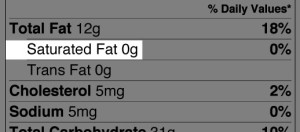
First, a little science: saturated fats are classified as fats that on a molecular level have no double bonds between carbon molecules because they are saturated with hydrogen molecules. It is normally solid at room temperature. This type of fat comes mainly from animal sources of food, such as red meat, poultry and full-fat dairy products. Saturated fat raises total blood cholesterol levels and low-density lipoprotein (LDL) cholesterol levels (the bad cholesterol), which can increase your risk of cardiovascular disease. Saturated fat may also increase your risk of type 2 diabetes. As mentioned, while a little bit of saturated fat is OK, you need to watch your consumption of foods high in saturated fat.
Trans Fat
While some types of trans fats are naturally produced in small amounts in the gut of some animals, most trans fats are formed during food processing, to make vegetable oil more solid as a way of improving the texture and shelf life of foods. When consumed, trans fats will raise the bad cholesterol levels in your body and lower the HDL cholesterol levels (the good cholesterol). In addition, trans fat raises your risk of developing heart diseases and stroke. This type of fat should be avoided.
Cholesterol
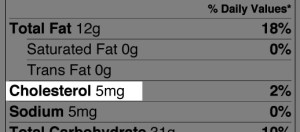
Cholesterol is a waxy, fat-like substance naturally created in your liver. Foods like meat, fish, eggs, butter, cheese and whole or low-fat milk also have cholesterol in them. While some cholesterol is beneficial for your brain, skin and organs, your body makes enough cholesterol to meet its needs. Too much cholesterol can clog your blood vessels and keep blood from moving freely throughout your body. This may eventually cause a heart attack or stroke.
Excessive cholesterol in your diet can increase your unhealthy LDL cholesterol level (although not as much as saturated fat does). Most foods that contain saturated fat also contain cholesterol. So cutting back on these foods will help decrease both saturated fat and cholesterol.
Sodium

Sodium, which in its most common form is known as salt, is an essential mineral for the human body. However, too much sodium can lead to hypertension and kidney damage in the body. According to the Dietary Guidelines for Americans, you should consume no more than 2,300 mg of sodium (about 1 teaspoon of table salt) per day, and less if you suffer from hypertension or have an elevated risk for cardiovascular disease.
Total Carbohydrates

The total carbohydrates on a nutrition label include all types of carbohydrates: sugar, complex carbohydrates (otherwise known as starch, which occurs naturally in vegetables, grains and cooked dry beans) and fiber. Carbohydrates are composed of the chemical elements carbon, hydrogen and oxygen. Despite a bad rap carbs are important because your body used them as its main fuel source. They work with the body to help with protein and fat metabolism, and fiber helps reduce your risk of cardiovascular disease. It's important to choose your carbs wisely, aiming to get most of your carbs from fruits, vegetables and whole grains. For more information on fiber and sugars, read on.
Dietary Fiber
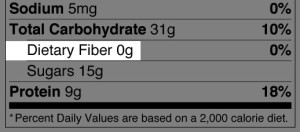
The dietary fiber in food is a carbohydrate that can move through the gastrointestinal tract and pick up toxins and impurities and expel them from the body. However, fiber can often be resistant to the body’s digestive enzymes and retain water, which can cause constipation. For this reason, fiber should be limited to 25 grams of fiber per day for women and 38 grams for men. Typically, most people consume only 15 grams. And when consuming a lot of fiber remember to drink a lot of liquids, too.
Sugars

Sugars are another form of carbohydrates, which can include natural sugars, white sugar, high-fructose corn syrup and other sweeteners. Sugar contains “empty calories,” which do not provide any nutritional benefit to the body but can lead to weight gain, type 2 diabetes, metabolic syndrome, and other negative effects. When looking at the label, it's important to realize that the amount shown includes natural sugars (found naturally in food such as grain, fruit and milk) and added sugar, which you want to avoid as much as possible. Identifying added sugar can be confusing. Most people look at the Nutrition Facts part of the label for the total number of grams of sugar in a serving of the product. It's important to realize, however, that the amount shown includes natural sugars found in certain ingredients, such as grain, fruit and milk. The only reliable way to identify added sugar is to look at the ingredient list.
Ingredients are listed in descending order by weight. If you see sugar listed among the first few ingredients, the product is likely to be high in added sugar. The Dietary Guidelines for Americans recommends no more than 10 percent of your daily calorie count should come from added sugar. The American Heart Association goes further, advocating no more than 25 grams a day for women (about six teaspoons) and 37.5 grams per day for men (about nine teaspoons).
When checking the ingredient list, here are some names for added sugar. The less of these you consume, the better off you will be. Also, check for ingredients ending in "ose" — that's the chemical name for many types of sugar, such as fructose, glucose, maltose and dextrose.
- Cane juice and cane syrup
- Corn sweeteners and high-fructose corn syrup
- Fruit juice concentrate and nectars
- Honey
- Malt syrup
- Molasses
Protein
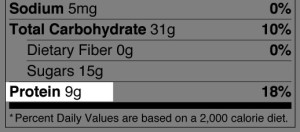
Known as macronutrients, proteins are large compounds made by combining smaller amino acids and contribute to providing your body with energy. In general, your diet should consist of 10 to 35 percent of proteins in your daily caloric intake. However, too much protein in your diet can put stress on your kidneys and liver. Understanding the nutrition labels on your food is just the first step to creating a healthy and fulfilled lifestyle. However, as with all lifestyle changes, be sure to consult with your family physician or dietician before making any changes in your diet.
